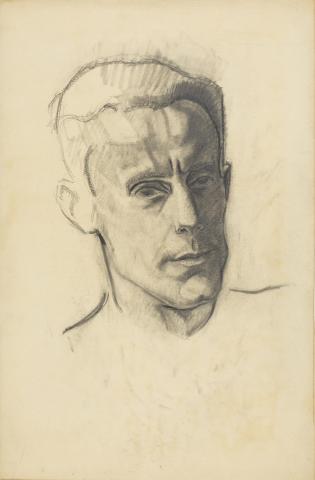Janós Wilde studied art history, archaeology and philosophy in Budapest and Vienna, where he completed his doctorate with Max Dvořák and Josef Strzygowski on The Beginnings of Italian Etching in 1918. He returned to Budapest and participated in the confiscation of privately owned works of art "of national importance" during the brief period of Béla Kun's Hungarian Soviet Republic in 1919. Although he was an assistant in the Department of Prints and Drawings at the Museum of Fine Arts until 1922, he had been granted a six-month study leave in September 1920 in order to be able to accept Max Dvořák's invitation to lecture at the University of Vienna. When Dvořák died in February 1921, Wilde remained in Vienna to prepare the publication of his collected works together with Karl Maria Swoboda, Dvořák's assistant. In June 1923, Wilde began working in the Picture Gallery of the Kunsthistorisches Museum (KHM), first as a scientific assistant, later as curator 2nd Class. His main focus was the Italian Renaissance. Around 1928, Wilde used X-rays as a systematic aid in painting restoration and was considered a pioneer in this field. At the "Röntgentechnische Versuchsanstalt" he researched new ways of analysing images and finally, in 1930, together with his colleague Sebastian Isepp, he set up his own institute at the KHM. In 1930, Wilde married the art historian Julia Gyárfás, also born in Budapest, in the Votivkirche.
Although his wife had already converted to the Protestant faith, Augsburg Confession, in 1919 and to Catholicism on the occasion of her marriage, she was considered Jewish according to the Nuremberg Laws, and Wilde was thus considered to have "Jewish connections". After the "Anschluss" in March 1938, the Commissarial Director of the KHM, Fritz Dworschak, applied to the Ministry of the Interior and Cultural Affairs for his continued employment, citing Wilde's "exceptional merits". However, this was not granted and Wilde, supported by Antoine Seilern, an Austro-British art historian and collector, and Kenneth Clark, director of the National Gallery in London, emigrated to Great Britain together with his wife in April 1939. The Wilde couple lived in Aberystwyth, Wales, where Wilde was in charge of the conservation of Seilern's art collection and the paintings of the National Gallery, which were housed in the same building. Wilde also catalogued the British Museum's collection of Italian drawings. In 1940, Wilde was interned in Canada as an "enemy alien" because the camps in Britain were overcrowded. However, he was able to return to England in 1941 and began teaching at the Courtauld Institute, an institute for art history belonging to London University with its own art collection. In 1948, he was appointed deputy director, a position he held until his retirement in 1958.

